Green architecture – BedZED eco-community
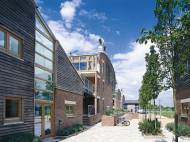 Energy efficiency and renewable energies are becoming an important fact in architecture today. Since new and more affordable technologies emerge, solar harnessed electric energy and heating, as well as passive and active systems of heating and cooling are becoming more widely spread. This way of ecological living is practiced by BedZED – an environmentally friendly housing development in Hackbridge, London, England.
Energy efficiency and renewable energies are becoming an important fact in architecture today. Since new and more affordable technologies emerge, solar harnessed electric energy and heating, as well as passive and active systems of heating and cooling are becoming more widely spread. This way of ecological living is practiced by BedZED – an environmentally friendly housing development in Hackbridge, London, England.
Designed and constructed by Bill Dunster Architects ZED factory in partnership with Peabody Trust, BedZED – Beddington Zero Energy Development eco-community covers total surface of 1.7 hectares, with 2,500 square meters (26,900 square feet) of living and working spaces as well as gardens that cover 1,640 square meters (17,600 square feet). It is one of the largest “CO2 neutral” eco-communities, with 100 apartments, offices, restaurants and cafes, roof gardens, and a sport complex.
The garden city movement – a term defined by Ebenezer Howard between 1898 and 1902 in his publication in Garden Cities of To-Morrow – represents an idea to create a symbiotic coexistence between urban and natural areas, and create habitats near working places. The general idea is to create planned proportionate areas of residences, industry and agriculture, that would enable self-contained communities surrounded by “greenbelts“.
Architect Bill Dunster wanted to show how sustainable development can be adapted to a concept of a BedZED garden – city. The site was chosen due to its easy access to public transport – there are train, bus and tramway lines nearby. As a part of policy to reduce the usage of cars, the needed number of parking spaces was initially 160, but the final plan provided more surface area for green spaces by creating only 100 parking spaces. Streets are wide and there is plenty of space for walking or cycling. There is also a possibility to be a part of a car club (car sharing, car pooling) to further lower traveling costs and pollution. This represents a good solution for the environment, as well as the social bonding within the neighborhood.
During the construction of the village, architects have planned to buy local material as much as possible. Typology of units is more diverse than it appears from exterior. There are 38 different plans, ranging from 50 square meters (540 square feet) to 84 square meters (904 square feet). Every apartment has its own south-oriented winter garden capable to store and redistribute heat during winter. Roof gardens are accessible from one of the pontoons that are connecting buildings, and every owner is allowed to alter their garden to suit their own needs. Green roofs, covered by herbs, give a smooth touch of green esthetic on usually unexpected places – up to two floor high buildings. Kitchens have garbage triage for green waste separation, and the waste is used for composting.
Energy for water heating is provided by a combination of solar, wind and biomass systems. Southern roofs and facades have optical concentrators with photovoltaic cells and thermal sensors, resulting with total of 777 square meters (8,360 square feet) of solar panels. Small wind turbines, heat pumps and fuel cells are used to generate additional electricity and thermal energy. Energy needs of BedZED are relatively low – 48 kWh/m² per year.
Runoff water from the roofs is collected into cisterns which can receive 28 l/m² of rainwater, and water usage is economized by a “store & reuse” system which provides 15 l/day per person. Paving of a driveway is permeable and it’s allowing rain to seep slowly into the ground. Water consumption in bathrooms and kitchens is lowered by low flow fixtures. BedZED also has its own septic system and plant-based waste water recycling system that diverts excess water into the rainwater tanks from where it’s used for toilet flushing.
Special attention has been given to isolation, and exterior walls are constructed with two layers of brick separated with 30cm (11.8 inches) of rock wool. Exterior windows are vacuum isolated, triple – glassed, and they were imported from Scandinavia, because there was no fabrication of this type of windows in United Kingdom. In order to increase living quality and lower energy usage, buildings are equipped with an intelligent lightening system.
Building aeration is achieved with inverse circulation of interior and exterior air, and indoor air quality is improved by use of non-toxic colors and materials without formaldehyde. The heating is achieved by hot water floor heating with water warmed by solar radiation or gas heated water boilers. The heating turns on automatically as soon as the temperature interior goes bellow 17°C.
However, there were several problems with the original concept. Despite their plans to generate between 5 and 15 % surplus power of annual demand in order to pay off both the embodied initial construction carbon and the planned maintenance, woodchip fuelled combined heat and power plant was too powerful for the needs of the site, and the community switched to gas-powered plant. Moreover, the system of wastewater treatment on site isn’t in use due to the high-cost of its operation.
Eco-community is an ideal place for the development of social connections between its habitants, and certain spaces serve for public use. “BedZED Pavilion” is used for various activities like dance, yoga, gym, music, children activities and bicycle maintenance. Bio market is opened every Sunday and all products sold there are grown in BedZED private gardens. It is estimated that one average “bedzed habitant” knows 19 neighbors by their name, which is a significant increase compared to an average habitant from UK who knows only 3.
Unfortunately, BedZED community isn’t fully committed to sustainability and environmentalism. While middle class habitants show interest for those issues, many of the habitants don’t know what this eco-community represents, and as a consequence only third of the residents live up to the eco-community way of life.

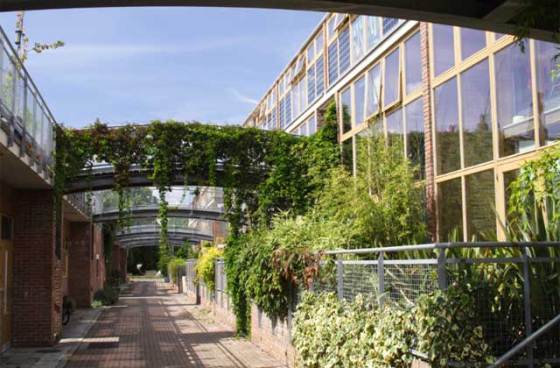
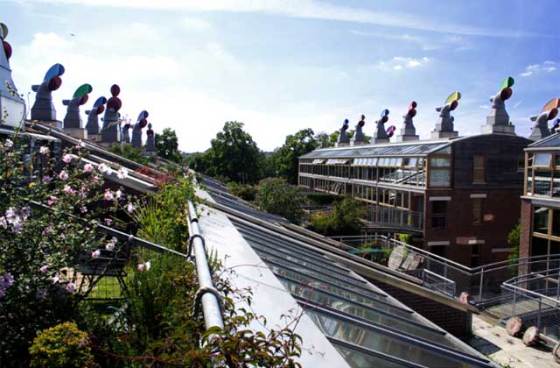
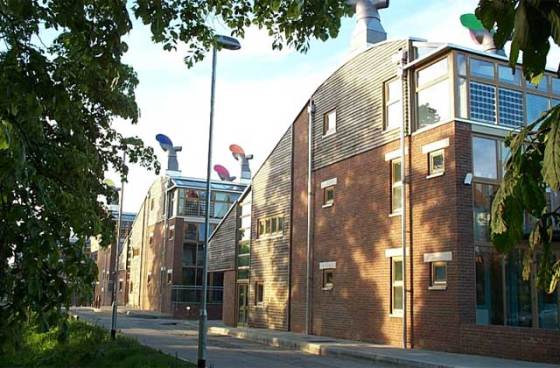
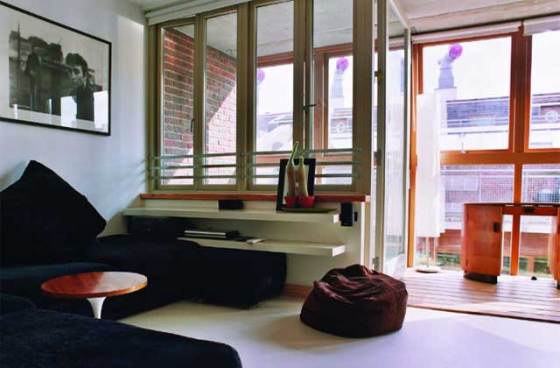
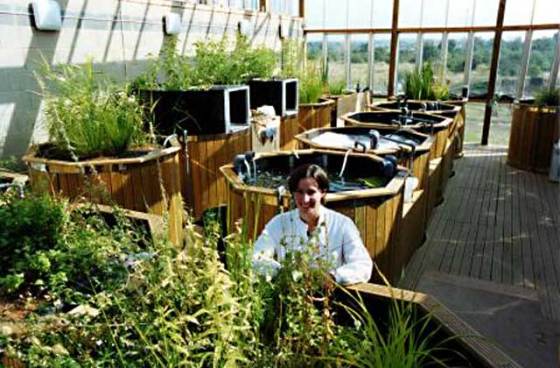








Ooh, a new writer?
Very nice idea to save resources needed for traveling by making mini-communities and share vehicles if you can’t manage to travel by public transport. ^_^
They should have used colors on facade rather than using color on chimneys.
author
Hi Hanako-sama, sorry for my late response.
Cost-sharing is nothing new nowadays. In France there is a whole network of this type of transportation called “covoiturage” and works perfectly well (from a personal experience;)). The main problem here, in Bed-Zed community, was that inhabitants weren’t quite ready to embrace this great solution, so that most of families living there have even two cars in place of one, or none!
As concerning colors… well if it was on a facade, what would it look like? Total cacophony and chaos. In my opinion, this was a nice solution, pleasant for an eye. But then again, tastes are different :)
Keep this going please, great job!
Hey! This is my first visit to your blog! We are a team of volunteers and starting a new initiative in a community in the same niche.
Your blog provided us valuable information to work on.
You have done a marvelous job!